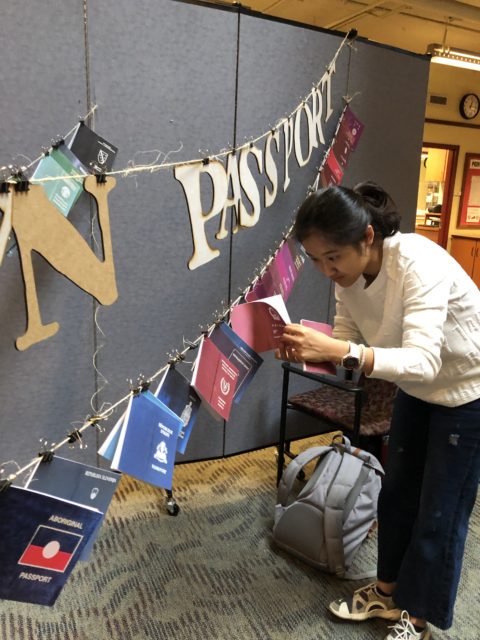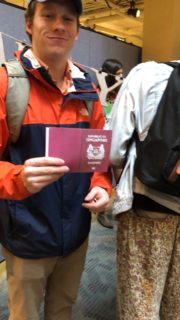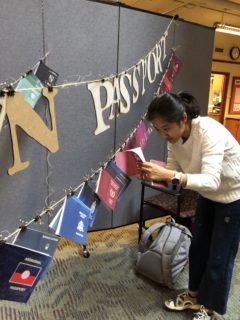On October 22, anyone passing through the Union-Alvarez center might have noticed a brightly colored display of passports strung together next to several tables lined with papers and other craft-making supplies. Then, on October 29, you might have had a severe case of déjà vu seeing this colorful array appear again at the VAC. Led by Tintin Wulia, one of the Baik Artist residents, these setups were for “Make Your Own Passport” workshops. At these workshops, which featured passports from around the world, students and faculty members were invited to participate in a conversation about the identities these different passports may give people. First, participants were asked if they had a favorite country—some based their choices on previous travel experiences; others on places they had always wanted to see. They then blindly drew a country out of a jar and went to find their particular country from the array of hanging passports. However, while luck assigned some people citizenship from a country, others drew the condition stateless. “Stateless” participants could then pick a narrative from a selection of true stories Tintin had prepared that documented the experiences of several different people and their realities of being stateless.
These stories facilitated discussion about the implications of passports and the concept of statelessness: are some passports stronger than others? What does it mean to base your identity on a document that was arbitrarily assigned to you at birth? These questions and others circulated throughout the different groups of students and faculty as they put their passport books together and shared the true stories of the stateless. For the “stateless” participants, Tintin had also prepared two travel documents that could be chosen instead of a passport. One was a travel document issued by the Chinese government to Jewish refugees during World War II; the other was a UN issued document for Palestinian refugees in Syria. However, even with these documents, the resounding question for the “stateless” participants was: what do I do next? Embedded in Tintin’s workshop was this exact question: what happens to the stateless?
The exact number of stateless people in the world is unknown, and any estimates we have are for certain inaccurate because stateless cases often go undocumented. Through the Make Your Own Passport workshop, Tintin challenged the Davidson community to think more deeply about the concepts of citizenship identity and statelessness. Continuing with these themes, her piece for the Baik Artist Residency alongside the other two artists, Jagath Weerasinghe and Yong Soon Min, focuses on the idea of borders and how they affect us. Although the artists are no longer in residency at Davidson College, their spectacular show will remain in the galleries until December 11! It is not something you want to miss. And because Tintin gifted this performance to the College and the galleries, be on the lookout for future Make Your Own Passport iterations!



